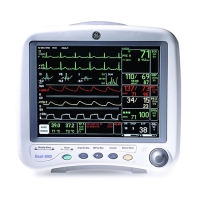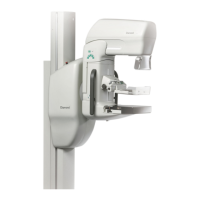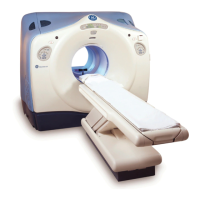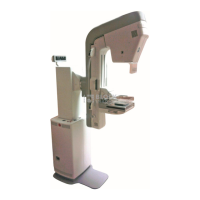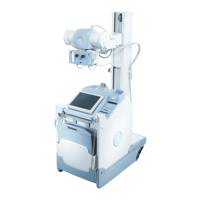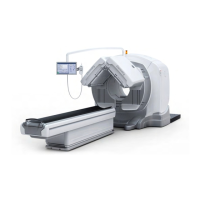Datex-Ohmeda S/5 Anesthesia and Critical Care Monitors
8
Document no. M1125633-06
NOTE: Make sure that the tubes are not in contact with the sampling pump or the O
2
sensor, or
its springs.
NOTE: Check that tubes are not contaminated. Any contamination inside the tubing can
increase a risk of faulty operation in valves or sensors. If any contamination inside the tubing is
noticed then it is recommended to send the module to factory repair.
2. Install the PM Kit:
− Replace the special tubes (Nafion™).
− Replace the Ref. filter assembly.
− Replace the filters in the pneumatic unit (1 or 2 pcs).
− Check the D-fend O-rings and replace them, if necessary.
− Replace the D-fend and sampling line.
− Clean or replace the fan filter.
NOTE: Use only approved sampling lines to ensure proper functioning.
Use a 2 m/7 ft. sampling line with Compact Airway Modules E-COVX and E-CAiOVX.
3. The manufacturer recommendation is to replace the CO
2
absorber every 4 years. Replace
the absorber, if necessary.
"
4. Connect the Compact Airway Module to a module slot in the module frame with a long
gas interface cable (the grounding plates of the cable should be removed for the
procedure).
2.1.4 Single-width Airway Module, E-miniC
1. Detach the module box.
2. Check that all cables and tubes are connected properly and that there are no loose
objects inside the module.
3. Install the PM Kit:
− Replace the special tube (Nafion™).
− Replace the Zero valve air filter every three years.
− Check the D-fend body connector O-rings and replace them, if necessary.
− Replace the Mini D-fend and the sampling line.
NOTE: Use only approved sampling lines to ensure proper functioning.
4. Connect the module to a module slot with a long gas interface cable (the grounding
plates of the cable should be removed for the procedure).
"
2.1.5 Recorder module
1. Clean the recorder.
− Open the paper compartment hatch and remove the paper roll, if installed.
− Remove any paper chaff from the paper compartment.
− Clean the thermal printhead and the small glass window in front of the static brush
with a cotton swab dipped in isopropyl alcohol, if necessary.

